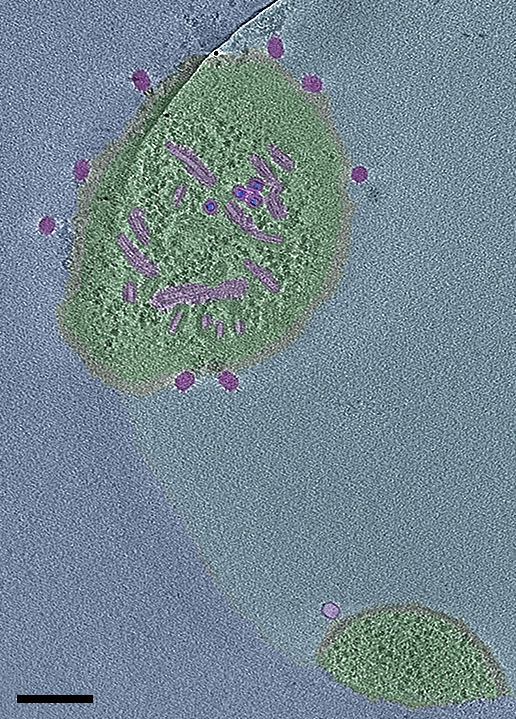A unique defence: Bacteria lose cell wall in the presence of virus
Bacteria temporarily live without their cell wall if dangerous viruses are near. A remarkable feature, as the cell wall is a sturdy barrier against threats. Still, the discovery has a logical explanation ánd might be of a consequence for fighting pathogenic bacteria, according to Véronique Ongenae, first author of the publication in Open Biology on date.

Bacteria can live without a cell wall for a time in stressful conditions, discovered the group of Dennis Claessen, professor at the Institute of Biology Leiden (IBL) in 2018. ‘But its purpose was not yet clear. My role is to find that benefit, as PhD Candidate in the research group,’ Ongenae says. ‘Therefore, I work with Streptomyces as well, which are the bacteria of which we discovered that they could live without their cell wall.’
An accidental finding
Ongenae grew Streptomyces in a so-called hyperosmotic environment. It has a high glucose concentration, enabling bacteria to lose their cell wall, instead of smashing apart. Ongenae: ‘I wildly experimented to let the bacteria lose their cell wall, and was wondering what would happen if I added bacteriophages to the Streptomyces. That are viruses that infect bacteria. And immediately all Streptomyces shed their cell wall! I could not believe my eyes. So I repeated the experiment over and over, but the result stayed the same.
Under the radar
With other known bacteria, such as Escherichia coli and Bacillus subtilis, Ongenae noted the same reaction to the presence of phages in a hyperosmotic environment. She suspects that bacteria lose their cell wall as soon as they get infected by the phage. ‘That is something we are looking into, but it looks like a defence mechanism,’ Ongenae notes. ‘By losing their cell wall, bacteria become unrecognizable for the phage and stay under the radar.’
Danger for humans
The interesting discovery also reveals potential complications in treating infections. ‘Phage therapies are nowadays more often used as a replacement for antibiotics, to rid the body of pathogenic bacteria. Especially as antibiotic resistance becomes more prevalent, phage therapy can be considered as a new way of treating infections. But now it turns out that bacteria can hide from phages. And as our blood vessels and urine also form a hyperosmotic environment, bacteria can live there without a cell wall too. So when the phages leave the body after a few days, bacteria will regrow their cell wall and bring back the infection.’
Because of this, Ongenae is also researching the effect on pathogenic bacteria, such as Pseudomonas aeruginosa and Acinetobacter baumannii. ‘Only then we will know if this is something to take into account.’
Read the complete publication

See a bacteria with phages
Bacteriophages are really small, only 50 nanometers. That is 5 x 10-5 millimeters! In the lab, the presence of phages is merely noticeable as bacteria dying. With an electron microscope, it is possible to see phages. Ongenae did this in collaboration with NeCEN, under the supervision of professor Ariane Briegel. In this short movie of Ongenae, the bacteria B. subtilis has some leftover cell wall on its membrane, to which the phages are attached.
